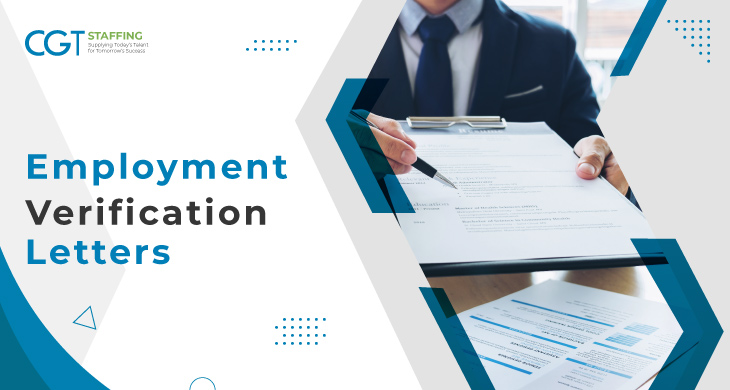In the realm of Human Resources (HR), crafting employment verification letters is an essential skill. These letters serve as a crucial communication tool, validating an individual’s employment history, job responsibilities, and salary details. Let’s examine the intricacies of creating effective and professional employment verification letters.
Table of Contents
Understanding the Purpose
Employment verification letters are not just mundane paperwork; they play a pivotal role in verifying an individual’s work history for various purposes, such as loan applications, rental agreements, or immigration processes.
The Key Components
An effective employment verification letter includes key components of HR analytics that provide a comprehensive overview of the employee’s tenure. These components typically encompass the employee’s full name, job title, dates of employment, and salary details. It’s crucial to ensure accuracy in these details to instill trust in the verifying party.
Personalization Adds Value
Beyond the standard details, personalization adds a touch of authenticity to the letter. Including specific achievements or contributions made by the employee during their tenure enhances the letter’s credibility. By showcasing the individual’s impact on the organization, the writer not only verifies employment but also highlights the positive aspects of that individual. Moreover, he or she also highlights the employee experience of that individual within the organization.
The Importance of Timeliness
Timeliness is critical when it comes to crafting employment verification letters. Whether the request comes from a former employee or an external party, responding promptly reflects an organization’s efficiency and professionalism. Aim to complete verification requests within a reasonable timeframe to foster positive relationships with both current and former staff.
Crafting a Polished Introduction
When initiating the employment verification letter, a polished and concise introduction sets the tone. Address the letter to the appropriate recipient, including their full name and title. A warm salutation not only adheres to professional etiquette, but it also establishes a positive rapport from the outset.
Clear and Concise Employment Details
The main body of the letter should provide a detailed but succinct account of the employee’s tenure. Avoid convoluted sentences; instead, opt for clarity and brevity. Clearly state the dates of employment, the position held, and any notable responsibilities or achievements. Using bullet points can enhance readability, making it easier for the reader to extract relevant information swiftly.
Verification of Salary Details
Incorporating salary details in the employment verification letter is a delicate task. While it’s essential to confirm the accuracy of compensation, exercise discretion in divulging specific figures. A general range or confirmation that the employee received a competitive salary is often sufficient. This approach safeguards sensitive information and maintains a level of privacy for both the employee and the organization.
Addressing Special Circumstances
Occasionally, employment verification requests may involve special circumstances, such as leaves of absence or unique employment arrangements like contract staffing. Addressing these situations with transparency and clarity is crucial. Clearly outline any periods of extended leave or unconventional work arrangements to provide a comprehensive and accurate account of the individual’s employment history.
Verifying the Requestor’s Identity
Ensuring the legitimacy of the verification request is paramount. Before disclosing any sensitive information, take measures to verify the identity of the requesting party. This may involve contacting the requesting entity directly or utilizing secure verification platforms. Upholding confidentiality in the verification process is not only a legal obligation but also a fundamental element of safeguarding sensitive information.
Complying with Legal Standards
Navigating the legal landscape is an integral part of crafting employment verification letters. Familiarize yourself with local and federal regulations governing employment verification processes. This includes understanding what information can be disclosed, the required consent from the employee, and the timelines within which the verification must be completed. Compliance with these standards safeguards the organization from legal complications. You can always ensure compliance by Staffing legal assistants or consulting with a law firm.
Emphasizing Positive Attributes
Beyond the factual details, take the opportunity to emphasize the positive attributes of the employee. Mention their strong work ethic, dedication, or any accolades they received during their tenure. This not only enhances the individual’s professional reputation but also reflects positively on the organization for nurturing and recognizing talent.
Utilizing Technology for Efficiency
In the digital age, leveraging technology can significantly enhance the efficiency of the employment verification process. Implementing secure online platforms for verification requests streamlines the process, reducing the administrative burden on HR professionals. Embrace technological solutions that prioritize security and confidentiality to ensure a seamless verification experience.
Closing on a Positive Note
As you conclude the employment verification letter, maintain a positive and professional tone. Express willingness to provide further assistance if needed and include appropriate contact information. A gracious closing not only leaves a lasting impression but also fosters goodwill, benefiting the organization’s reputation.
Continuous Improvement
Crafting employment verification letters is not a one-time task; it’s an evolving process. Regularly review and update templates to align with industry best practices and legal requirements. This ensures professional continuity and compliance concerning the nuances of employment verification. You can always obtain further valuable insights from industry-specific staffing agencies, such as IT staffing companies. They can provide you with a general idea of industry standards and requirements for employment verification.
In Summary
Mastering the art of crafting employment verification letters is an indispensable skill for HR professionals. By understanding the purpose, personalizing content, ensuring timeliness, and navigating legal nuances, HR departments can contribute to a positive and efficient verification process. Remember: these letters not only verify employment but also serve as a reflection of the organization’s commitment to professionalism and transparency. If you need help crafting employment verification letters, feel free to contact the best Staffing agency in Pittsburgh.
